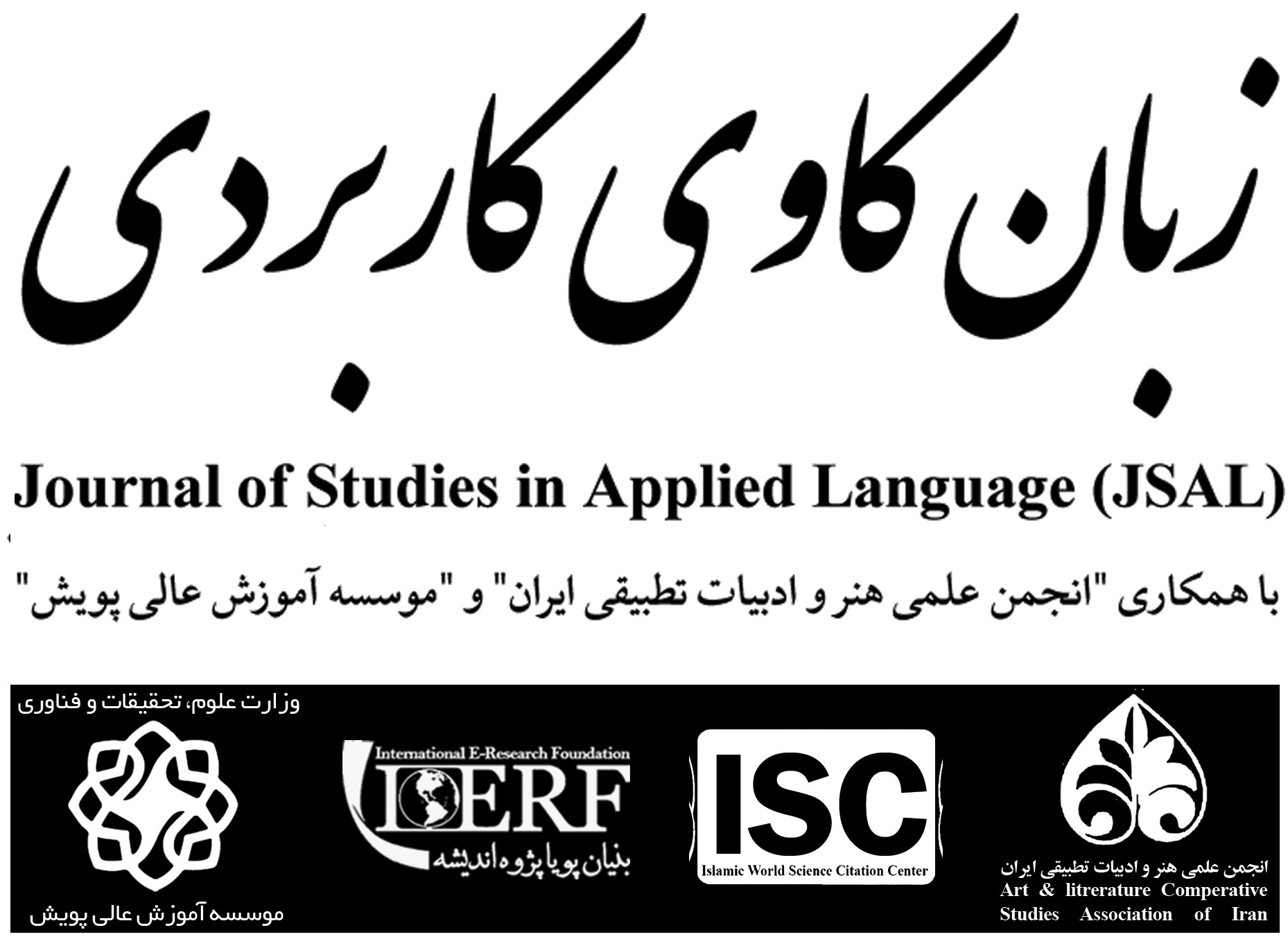Volume 6, Issue 1 (Journal of Studies in Applied Language (JSAL) 2023)
JSAL 2023, 6(1): 79-99 |
Back to browse issues page
Download citation:
BibTeX | RIS | EndNote | Medlars | ProCite | Reference Manager | RefWorks
Send citation to:



BibTeX | RIS | EndNote | Medlars | ProCite | Reference Manager | RefWorks
Send citation to:
Jalalabadi S N, Taktbar H. (2023). Analyzing the Element of Time in the Novel "In the Spider's Pavilion" based on Gerard Genet's Theory of Narrative Time [In Persian]. JSAL. 6(1), 79-99. doi:10.52547/jsal.6.1.79
URL: http://jsal.ierf.ir/article-1-24-en.html
URL: http://jsal.ierf.ir/article-1-24-en.html
1- MA in Arabic language and literature, Faculty of Literature and Humanities, University of Qom, Iran , bbaharii333@gmail.com
2- Associate Professor, Department of Arabic Language and Literature, Faculty of Literature and Humanities, University of Qom, Iran
2- Associate Professor, Department of Arabic Language and Literature, Faculty of Literature and Humanities, University of Qom, Iran
Abstract: (2995 Views)
The tale is seen by French thinker Gérard Genet as the signification or narrative content. Genet defines narrative as the genuine meaning of the word signification, expression, discourse, or narrative. He uses his unique terminology and analyzes three different forms of temporal relationships (order, continuity, and frequency) between the time of the tale and the time of the narrative text when talking about time. The current study uses Genette's theory of narrative time to analyze the book Fi Khamrah al-Ankabut. Mohammad Abdul Nabi, who was a 2017 Booker Prize nominee, is the author of this book. There are 39 unnamed chapters in this work, and each one alternates between the present, the past, and the past in the past. One may comprehend the significance and unique role of this strategy in effectively moving the plot along by looking at how time is used in the spider's room in the novel. This story's circular manner of storytelling, which places the story's ending at the same geographical starting spot as the beginning, demonstrates the accuracy of the author. The novel The Room of the Spider may be seen as one of the multi-layered works from the perspective of time. After the primary story begins, subsidiary narratives are developed next to it in a thoroughly organized manner to achieve the narrator's purpose. Mohammad Abdul Nabi reveals to the reader the passage of time for the story's protagonists and information about the different crises facing Egypt at the time by jerking the narrative's timeline with time previews and time returns. Hindsight serves the greatest purpose in the book in terms of temporal components in the area of order and order, and it should best utilize all four parts of delay, deletion, summary, and dramatic scene. Although the work is known for its recollection and time travel formats, and it is believed that the narrator would appear more frequently, the author has chosen to employ single frequencies more frequently than other varieties. This demonstrates the author's command of the material as well as his capacity to write a variety of settings. Since the book In the Spider's Room is based on an actual incident that has been recorded in Egyptian history, reality plays a significant role in it. The narrator illustrates the realities of Egyptian society both directly and inadvertently while telling the tale of "Hani," one of the victims of the "Kevin Boot" scandal.
Keywords: Fi-Khamra al-Ankabut, Mohammad Abdul Nabi, Narratology, Gerard Genet, Theory of time, Discourse Analysis
Type of Study: Research |
Subject:
Discourse Analysis
Received: 2022/09/1 | Accepted: 2023/02/20 | Published: 2023/03/1
Received: 2022/09/1 | Accepted: 2023/02/20 | Published: 2023/03/1
References
1. Okhovvat, A., (1371), Story grammar, translated by: Farzaneh Taheri, Tehran, publishing house.
2. Eigelton, T., (1386), Introduction to Literary Theory, translated by: Mostafa Abedini Fard, Tehran, Nilofar.
3. Payandeh, H., (2017), Theory and literary criticism, 1th Edition, Tehran, Samt.
4. Tolan, M. J., (1383), A critical-linguistic introduction to narrative, translated by Abolfazl Hori, Tehran, Farabi Cinema Foundation.
5. Jinet, G., (1977), Khotat al-Hekaya, translated by: Mohammad Moatasem and Akharoon, 2th Edition, Al-Rabat.
6. Hassan al-Qasravi, M., (2004), Al-Zaman fi al-Revaya al-Arabiye, 1th Edition, Beirut: Arab Research Foundation.
7. Ricour, P., (1384), Time and story (configuration of time in a story), translated by: Mahshid Nonhali, 1th Edition, Tehran, Gam No Publications .
8. Reymon Kanaan, S., (1995), Al-Takhyiil al-Qassasi; Contemporary poetry, translated by: hasan Ahamamah, 1th Edition, Jordan: Dar al-sagafe Publications.
9. Genet, Gerrar, (2018), Narrative discourse: an inquiry about the method, translated by: Masoumeh Zavarian, Tehran, Samt.
10. Abdul al-Nabi, M., (2017), In the spider's room, Al-eskandria, Dar al-Ain Publications.
Send email to the article author
| Rights and permissions | |
 |
This work is licensed under a Creative Commons Attribution-NonCommercial 4.0 International License. |









